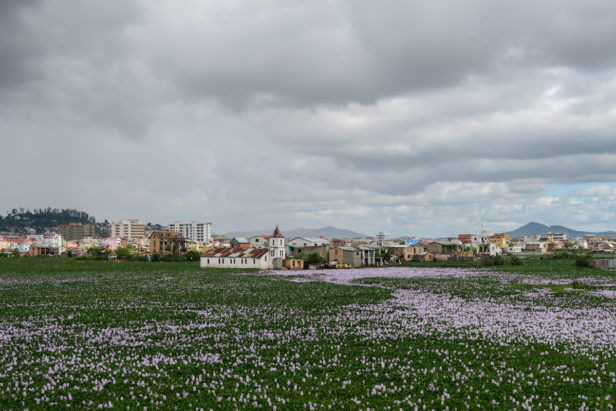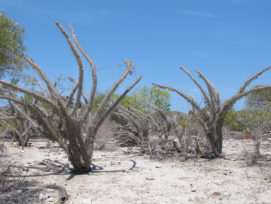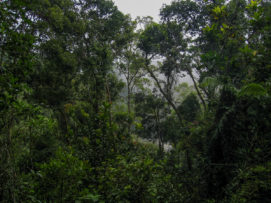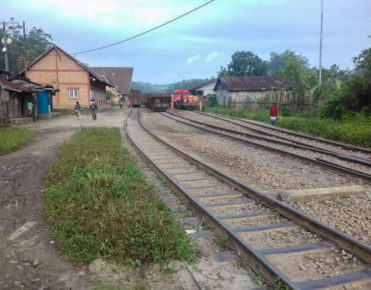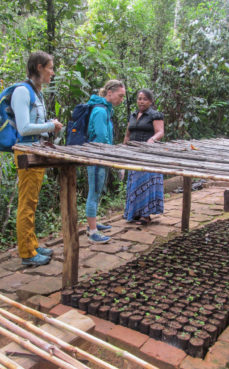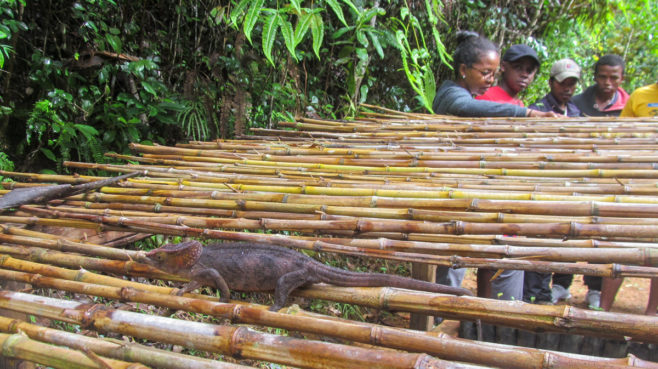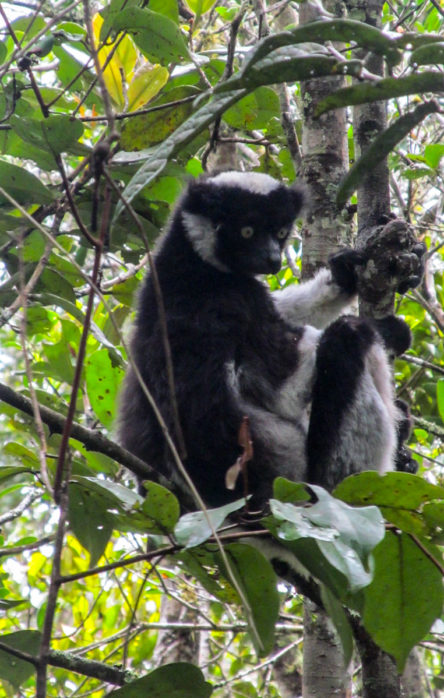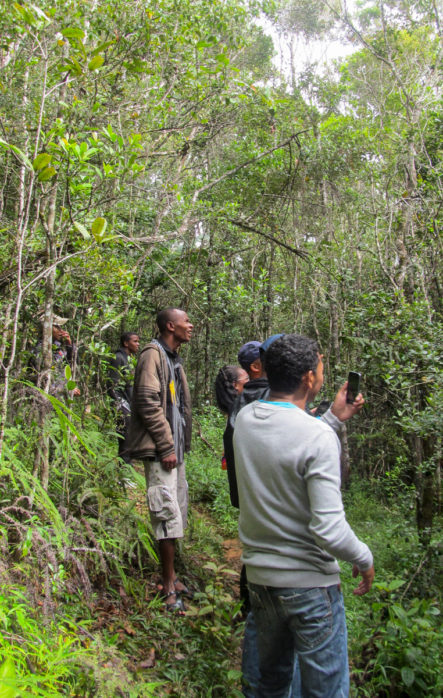I heard the exciting news at one of our weekly blue forests team meetings at the end of 2017. We were to have a team building retreat in Andasibe – a village name that had never crossed my ears before. Not having any idea of where Andasibe was, I was simply thrilled to have the opportunity to explore other regions in Madagascar outside of the southwest, and share experiences with my blue forests colleagues from the northwest.
After eight hours of car ride from the village of Andavadoaka (where I am based), we left Toliara city in the early morning of February 19th, 2018. All along the way, I was excited by the change in types of vegetation, climate and crops. I noticed that the vegetation became greener and taller the further away we moved from the southwest. The crops too were more varied, and I thought to myself that the higher rainfall must be the reason for such good agriculture.
My thoughts were justified when we left the village of Ambohimahasoa early the next morning. From there until we reached the capital city of Antananarivo, we were hit by ceaseless heavy rain. I did not believe such a heavy rain as this could exist, as we have never experienced anything of the sort in my region except during cyclones. I was eager to go out and explore our famous capital city, but the rain continued day and night, and the next day we took the road east to reach Andasibe. The rain continued, and the forests became dense and higher than we had crossed before. It took us three and a half hours to reach the village, in the middle of the dense rainforest. It was dark and quiet. Only the voice of birds and unknown animals could be heard. I was curious to see them but they were hidden in the forest.
At first look, the village seems small and unimportant, but it has an interesting story. It was heavily inhabited by the French during their colonisation of Madagascar, and they built an ancient railway that is still functional today. It was my first time seeing a railway. I had learnt about them in primary school but I had never before seen them with my eyes. The first night in the village was an opportunity for the blue forests teams from across the country to talk, drink together, and share their happiness and points of view about the retreat.
“Why are we all here?” I wondered to myself as the new day dawned. I didn’t have to wait long to find out. Everyone gathered together in a meeting room about one kilometre away, and then the talking began.
To start with, each team member shared the details of their role – their tasks, responsibilities and the challenges that they face. I presented on mangrove reforestation efforts and terrestrial tree plantations in the southwest – my first experience of presenting in front of my colleagues. Despite this, I had no fear because my mind was focused on sharing my experiences and challenges with my colleagues from the northwest. After the presentations were over, we discussed a series of questions and exchanged ideas on how to improve our work helping communities to protect their mangroves, and supporting them to become beekeepers.
These discussions continued into the second day, but we also left the room for a while to visit the Mitsinjo National Park. Mitsinjo is 155 square kilometres of protected area formed of primary forest so pristine that it looks like it has never been modified by human beings. After a whole hour of trekking through the mountains covered by tall trees, I still hadn’t seen any stumps or signs of deforestation. It came to my mind that the people surrounding the area must respect the rules of the park.
We were all interested in the management of the park, and whether there were lessons that could be learned. The park managers told us as we trekked that they have already prepared for any future destruction in the forest by establishing tree nurseries to replace any dead or destroyed trees. One of the community members also gave us a presentation on how they now manage these tree nurseries themselves, and how they train guides to show visitors the park.
Thanks to this sustainable management, the park is a refuge for many animals and plants. We were lucky enough to see some of them during our trek, including lemurs, orchids, and a large red frog. Seeing indri, the biggest lemur in the world (babakoto in Malagasy) was the most impressive moment of our trek. I was fascinated by their strange singing, something I’d heard from a distance on our first day in Andasibe.
On the final day of our retreat, we summarised what we had learnt over the three days, and worked together to define strategies for how to improve our work with communities.
One of the lessons learnt is that, although the regions that we all work in are different, the overall goals and challenges are very similar. Most of the challenges faced in both the southwest and the northwest are to do with maintaining a strong positive relationship with the communities we work with. All of the activities we implement are dependent on their willingness and involvement, and it is necessary to respect and involve them in every step.
As the Local Focal Point for the blue forests team in the southwest, it is my priority going forwards to maintain a good relationship with the local communities. I will work with them far in advance to plan activities such as reforestation, a community consultation, or the delineation of protected mangroves. It is also important to listen to their needs and consider those needs as neither good nor bad for the project, but important in their own right.
I will also set good communication standards and share experience with my team members who have the same responsibility as me. Good communication and respect between and within project teams is essential if we want to implement effective strategies together. Retreats like in Andasibe help to foster good relationships between team members, and enable us to share experiences with those from other sites.
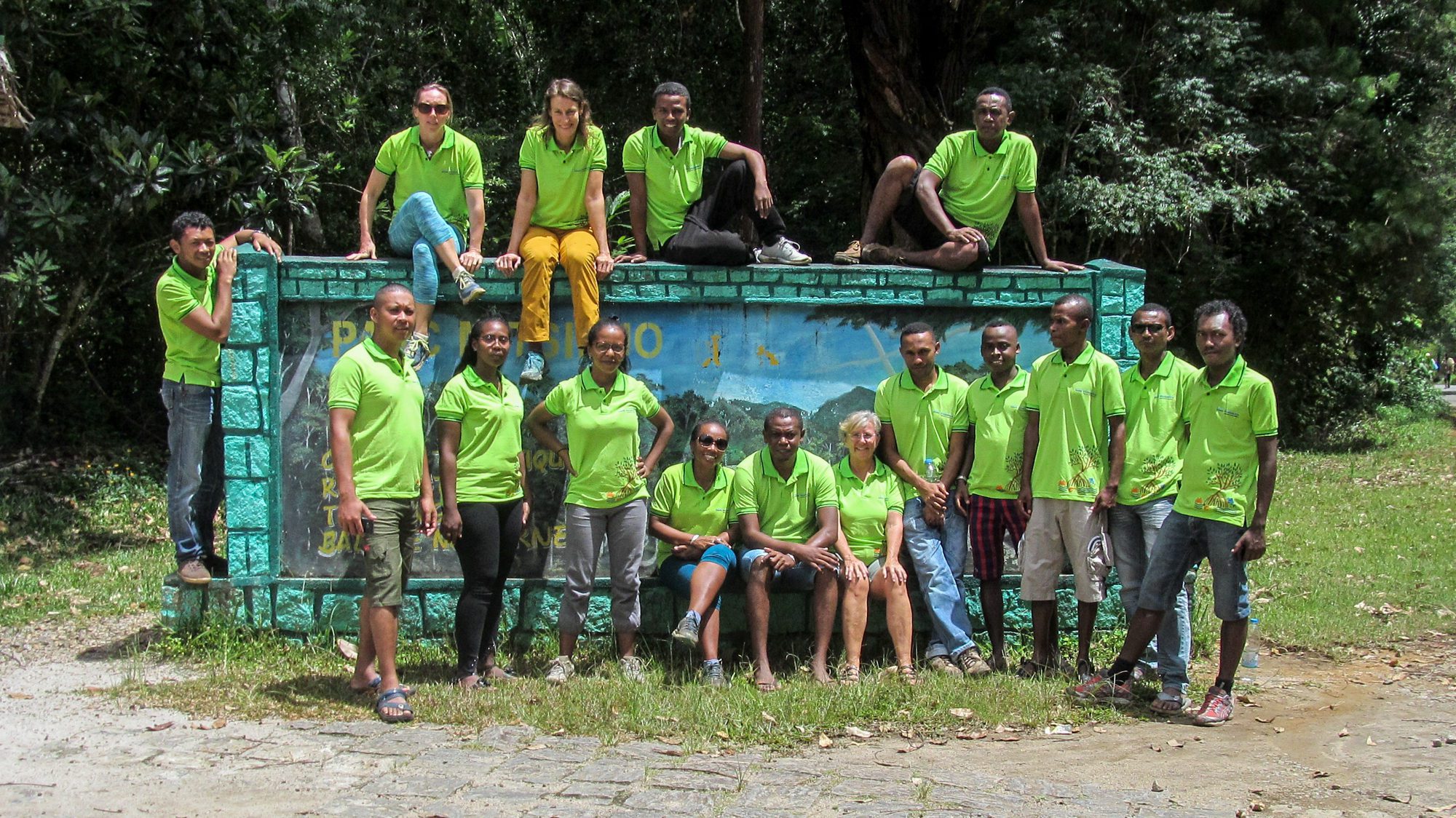
The blue forests team outside Mitsinjo National Park
Personally, I also learnt that Madagascar is a big island! I used to think that the region where I live is huge, but I did not know about the other regions. It was also a pleasure to travel by car, as my village is situated in a remote area and has poor road infrastructure. However, the car journey to Andasibe made me feel sick because of the length of the road.
In the future, I hope that retreats like this will be continue, as it has allowed the blue forests team to come together and generate new ideas, strategies and visions. I would like to thank everyone involved in organising the retreat, and I hope we will meet again soon on the next one!
Read the latest scientific research from our blue forests team
Credit for photos: Blue Ventures / Jen Hacking
We would like to thank the MacArthur Foundation, the Helmsley Charitable Trust, and the GEF Blue Forests project for their support of our blue forests programme.


